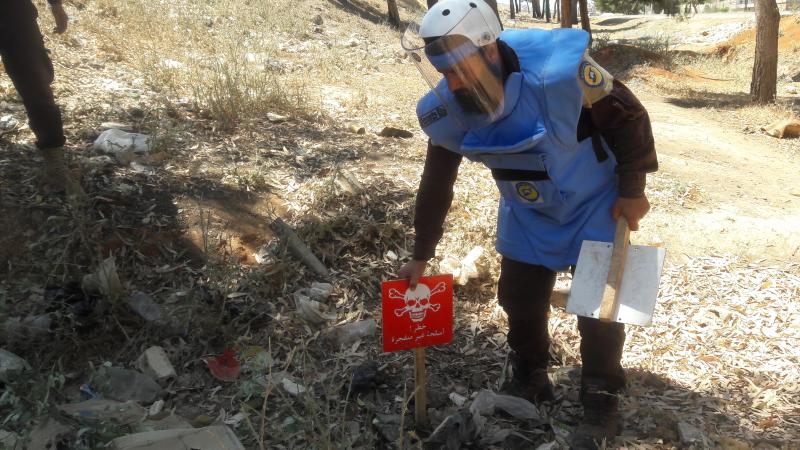The annual Cluster Munition Monitor Report has received strong media interest with coverage by The New York Times and outlets around the world. The US chapter of the annual monitoring report by the Cluster Munition Coalition contains few clues as to what the Trump administration might do with respect to the weapons.
It reports that the United States (US) rarely commented publicly on the 2008 treaty banning cluster munitions until November 2015, when it abstained from the vote on the first UN General Assembly resolution on the convention. The US repeated its postion again in October 2016 upon abstaining by a second UNGA resolution on the convention, stating that it "does not accept by this or any other standard that the Convention on Cluster Munitions represents an emerging norm or reflects customary international law that would prohibit the use of cluster munitions in armed conflict."
According to Cluster Munition Monitor 2017, the US maintains that cluster munitions have military utility, but, with the exception of a single 2009 strike in Yemen, has not used them since 2003 in Iraq. There has been no evidence to indicate that the US-led forces are using cluster munitions in the coalition operation against Islamic State (IS) forces in Syria and Iraq.
A 2008 Department of Defense policy directive requires that the US not use cluster munitions that result in more than 1% unexploded ordnance (UXO) after 2018. The Pentagon has removed a significant number of cluster munitions from active stockpile for demilitarization and destruction.
The Trump administration has not commented on cluster munitions or indicated if it the policy will be reviewed and amended. The Obama administration implemented this policy without review or change.
The US last budgeted funds to produce new cluster munitions in 2007. Since then it has only manufactured cluster munitions for foreign sales. In October 2016, the US told the UN that it “does not transfer cluster munitions to other countries except those that meet the 1% UXO rate” in accordance with US law.
The CBU-105 Sensor Fuzed Weapon is the only cluster munition that the US claims to meet the 1% UXO standard. It is transferred on the condition that recipient state agree not to use them in civilian areas. In August 2016, the CBU-105 manufacturer Textron Systems announced that it is ending production of the weapon. The move came after the Obama administration halted cluster munition transfers to Saudi Arabia in May 2016, following evidence of civilian harm from their usein Yemen.
Textron's decision has effectively ended US manufacturing of cluster munitions, as it was the country’s last producer of the weapons. The Monitor will continue to list the US as one of 16 producer states until it formally commits not to produce cluster munitions in the future.
For more information, see:
